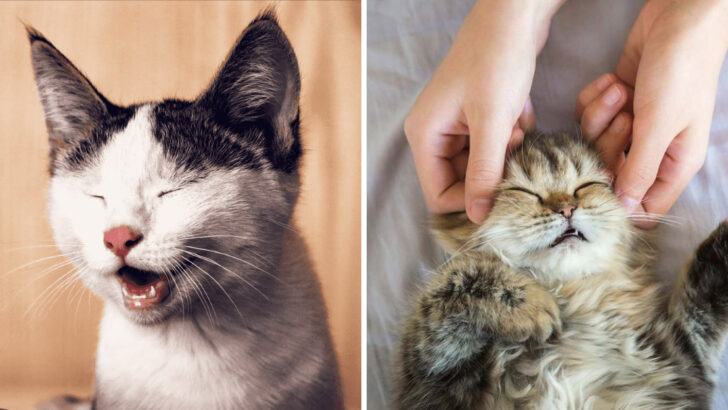Your cat isn’t being dramatic—she’s under attack.
At least, that’s how it feels when a cucumber appears out of nowhere or the vacuum growls to life.
Felines may be fierce hunters, but they’re also tiny bundles of nerves wrapped in fur.
From loud noises to sudden movements, there are things that send them into full ninja mode.
But don’t worry—we’re not here to judge your jittery fluffball.
We’re here to help.
This list breaks down 10 common fear triggers that make cats flip, and the calming tricks that can bring the peace back to their paws.
Because every skittish tail flick deserves a little understanding—and a whole lot of love.
Loud Noises
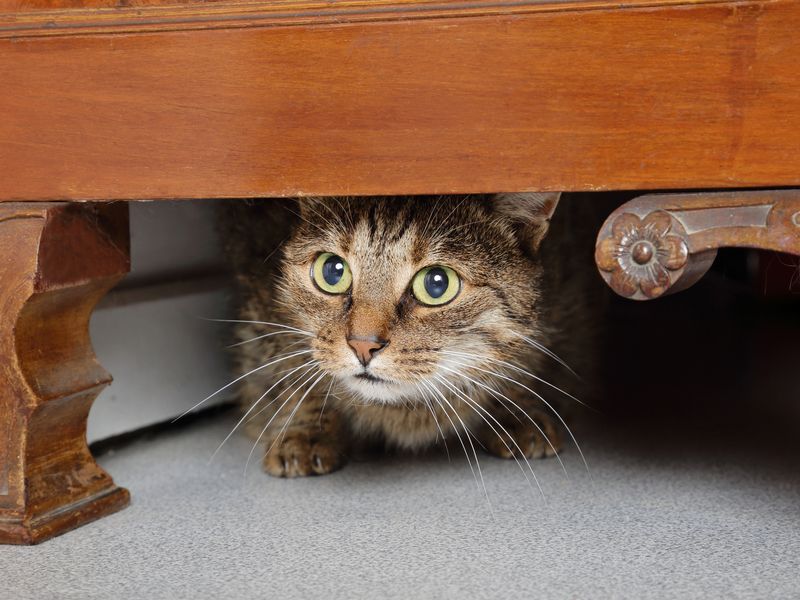
Cats have an acute sense of hearing that makes them particularly sensitive to loud noises such as thunderstorms and fireworks. These sudden, intense sounds can send them scurrying under the nearest piece of furniture. Even the rumble of construction work or a slamming door might set a cat’s heart racing.
To soothe a cat scared by loud noises, try playing soft classical music or white noise. The gentle sounds can mask the noise and help create a calming environment. Additionally, providing a cozy hiding spot can offer comfort and security until the noise subsides.
Strange Smells

Cats rely heavily on their sense of smell to understand their world. New or strong odors can be unsettling, causing them to recoil or become anxious. A pungent perfume, freshly painted walls, or even the scent of another animal can disturb a cat’s peace.
To ease their discomfort, introduce new scents gradually. Using familiar smells like lavender or catnip can also help create a soothing atmosphere. Allowing your cat to explore the source of the smell at their own pace can encourage curiosity rather than fear.
New Animals
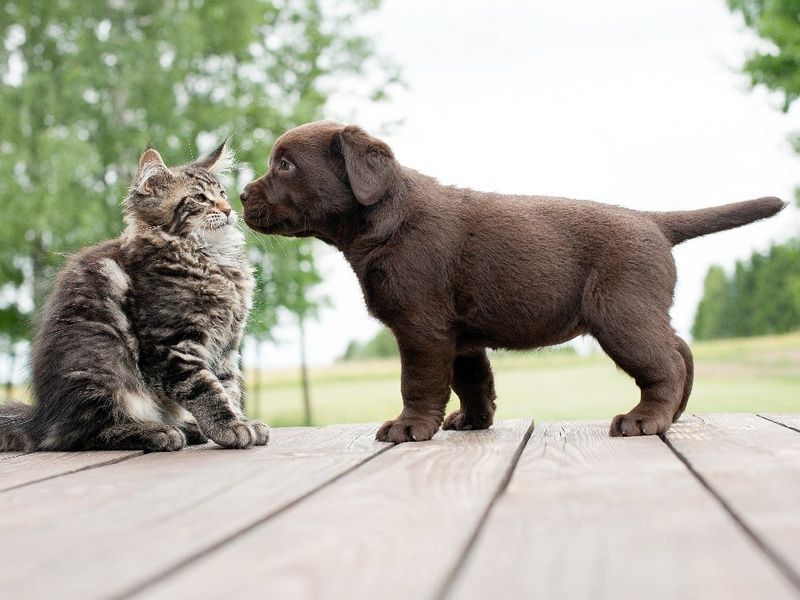
The introduction of a new animal into a home can be an overwhelming experience for a cat. They are territorial creatures, and a new pet might be viewed as an intruder threatening their domain. The unfamiliar scent and behavior of a different species can cause stress and anxiety.
To ease this transition, introduce the new animal gradually. Start with short, supervised interactions and allow your cat to retreat to a safe space if needed. Providing separate feeding areas and plenty of love can help smooth the way to peaceful coexistence.
High-Pitched Sounds
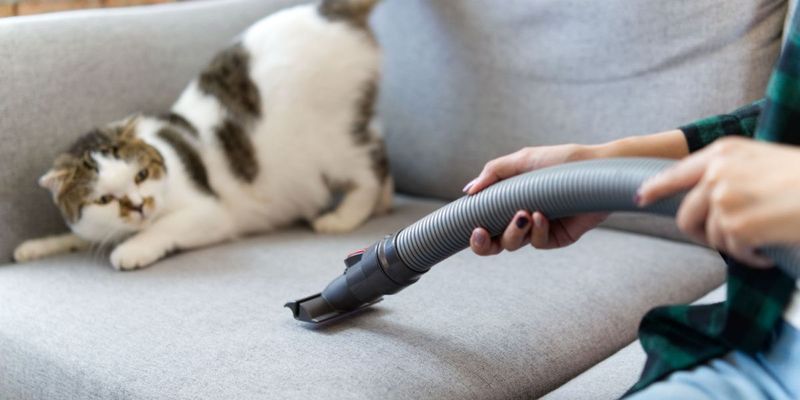
The world is a noisy place, and high-pitched sounds like vacuum cleaners, alarms, or even a child’s squeal can be distressing for cats. Their ears are tuned to detect subtle, high-frequency noises, which means these sounds can seem unbearably loud to them.
To combat this, try creating a safe haven in a quiet room where your cat can escape from the cacophony. Playing calming sounds or using earplugs specifically designed for pets might also help reduce their stress.
Unfamiliar Visitors
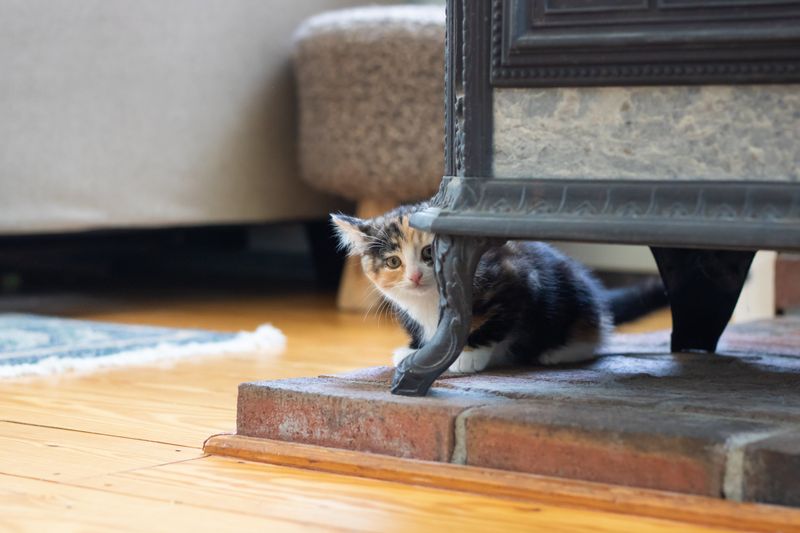
Cats often find strangers unsettling, especially if they are unused to frequent company. The sudden influx of new faces and voices can be overwhelming, causing them to hide or become anxious.
To help your cat acclimate, give them a private space where they can observe from a distance. Gradually exposing your cat to visitors by allowing them to approach when ready will build confidence. Offering treats and gentle encouragement can also reassure them that guests are not a threat.
Changes in Routine
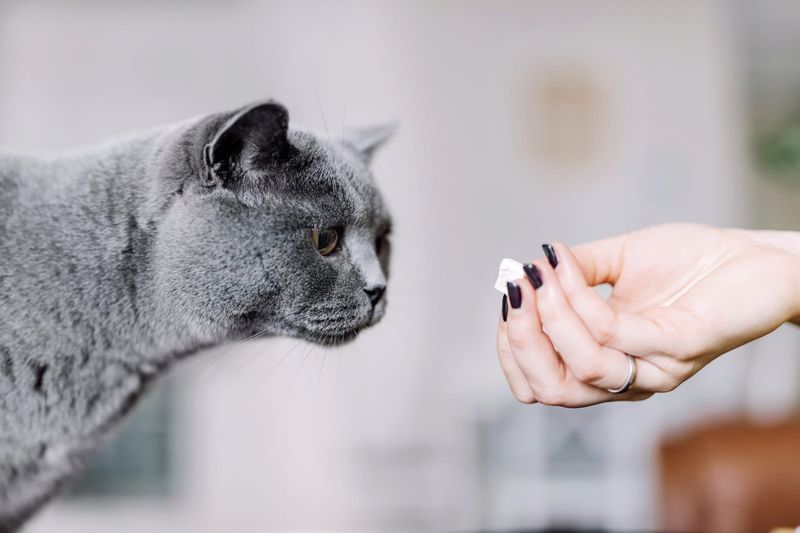
Consistency is key for cats, and any disruption to their routine—be it feeding time, sleeping spots, or play schedules—can cause anxiety. Cats thrive on predictability, and even a small change can throw them off balance.
To ease their unease, try to keep routines as stable as possible. If changes are unavoidable, introduce them gradually, allowing your cat to adjust at their own pace. Providing extra affection and attention during transitions can help reinforce a sense of security.
Veterinary Visits
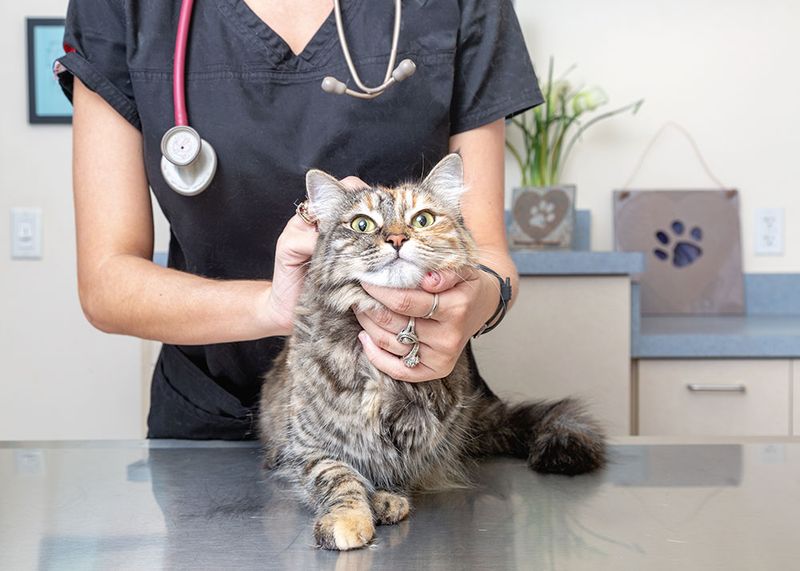
Visits to the vet are a necessary part of a cat’s life but can be highly stressful. The unfamiliar environment, strange smells, and handling by strangers can make the experience frightening.
To make veterinary visits less daunting, get your cat accustomed to their carrier at home. Use calming pheromones or sprays to reduce anxiety. Wrapping them in a favorite blanket and speaking soothingly can also help your cat feel more at ease during these necessary trips.
Sudden Movements

Cats are naturally skittish creatures, and sudden movements can trigger their instinct to flee. This could be something as simple as a falling object or a sudden gesture from a human.
Creating a calm environment with minimal sudden changes can help reduce their jumpiness. Using toys designed for slow, interactive play can also help them associate movement with positive experiences rather than fear.
Thunderstorms

Thunderstorms can be terrifying for cats, with the combination of loud thunderclaps, flashing lightning, and changes in atmospheric pressure. This sensory overload can send a cat running for cover.
During a storm, provide a dark, quiet space where your cat can feel sheltered. Playing soothing music or white noise can help mask the sounds of the storm. Remaining calm yourself will also reassure your cat that there is no danger.
Separation Anxiety
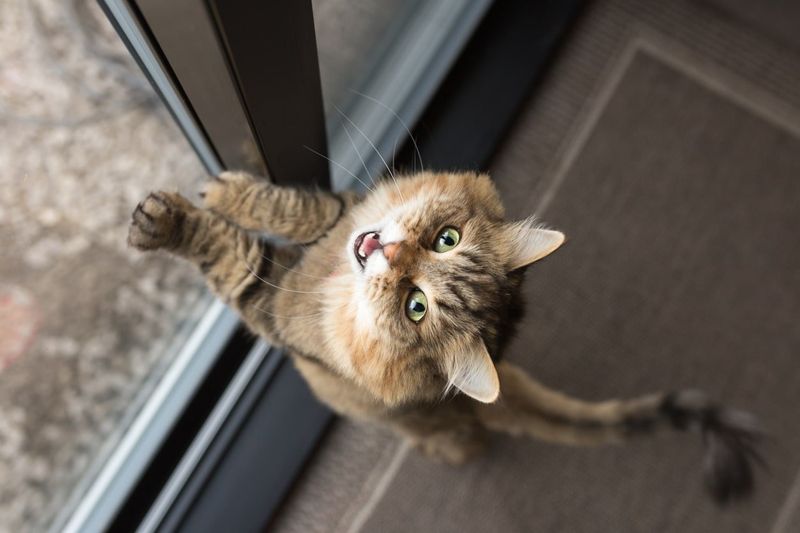
Cats can form strong bonds with their humans, and separation anxiety may occur when they are left alone. Signs include excessive vocalization, destructive behavior, or changes in eating habits.
To alleviate this anxiety, establish a routine that includes timed feeding and play sessions before you leave. Consider interactive toys or puzzle feeders to keep your cat engaged in your absence. Gradual desensitization to your departures can also help lessen their stress.
Calming Trick: Classical Music
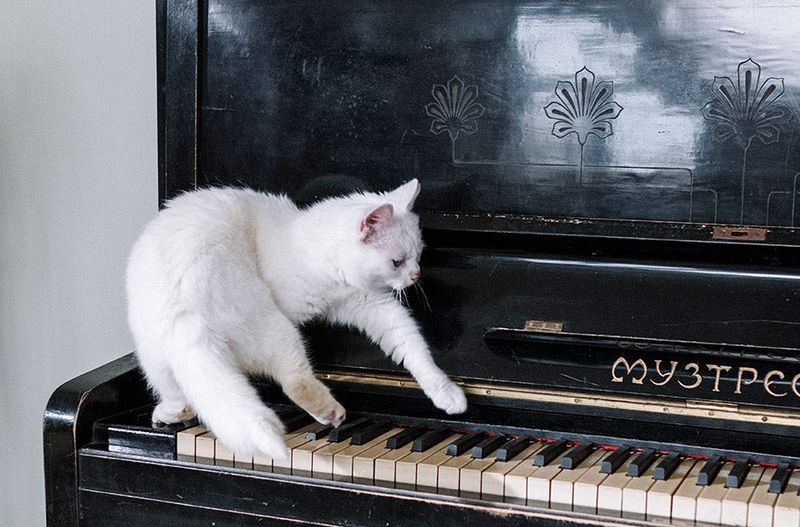
Playing classical music has been found to have a calming effect on cats. The gentle melodies can soothe their nerves, especially during moments of stress like thunderstorms or fireworks.
Create a playlist of soft, instrumental music and play it at a low volume. The consistent rhythm can provide a sense of security and help mask external noises that might frighten your cat. Observing their reaction will help you adjust the music to suit their preferences.
Calming Trick: Pheromone Diffusers
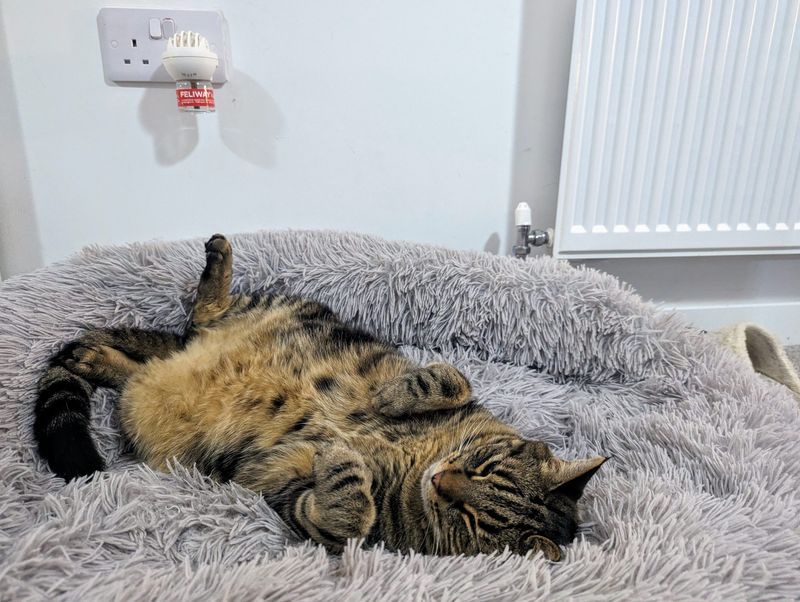
Pheromone diffusers mimic the natural pheromones that cats produce, creating a comforting environment. These devices can help alleviate stress and anxiety caused by changes in the household or new additions to the family.
Place the diffuser in areas your cat frequents, such as sleeping or eating spots. Over time, the calming effect will help your cat feel more secure and reduce fearful reactions to sudden changes or new situations.
Calming Trick: Safe Spaces
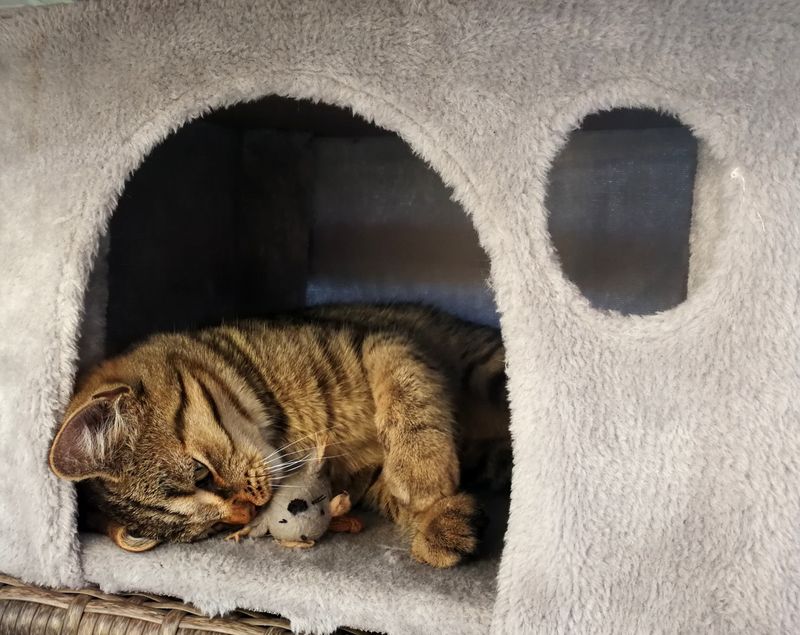
Providing a safe space for your cat is crucial in helping them cope with fear. A designated area where they can retreat and feel secure can make all the difference.
Set up a quiet corner with soft bedding or a hideaway where your cat can escape when overwhelmed. Ensure the space is easily accessible and free from disturbances. This sanctuary will become a refuge where they can relax and regain their sense of calm.
Calming Trick: Interactive Toys
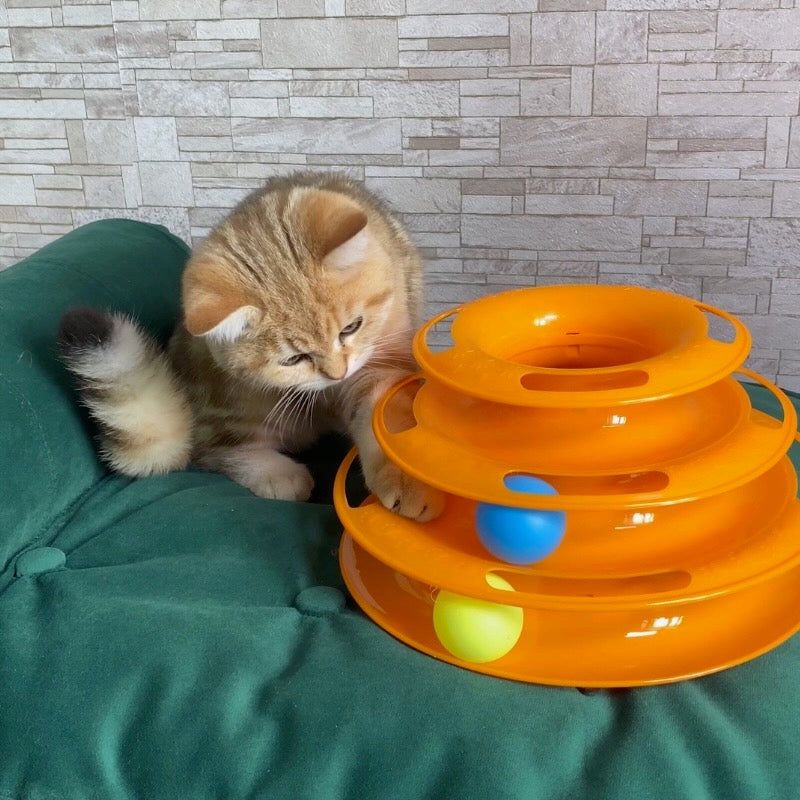
Interactive toys can be a great way to distract and engage a nervous cat. These toys encourage play and exercise, helping to reduce anxiety and stress.
Choose toys that stimulate their natural hunting instincts, such as feather wands or puzzle feeders. Regular play sessions will not only provide a physical outlet but also strengthen the bond between you and your cat, offering emotional security.
Calming Trick: Routine Consistency
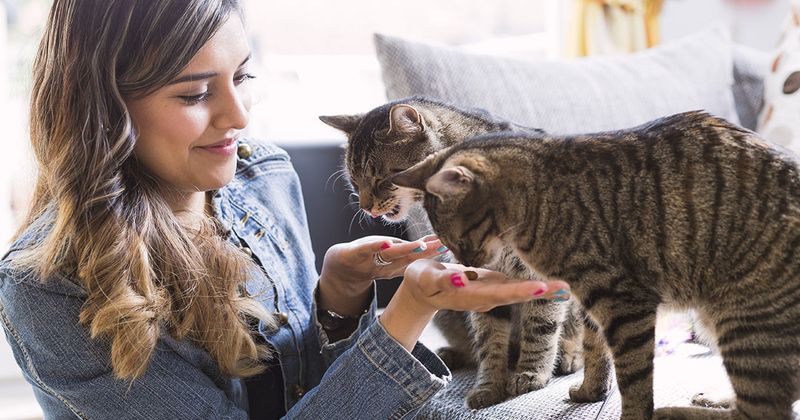
Maintaining a consistent routine provides a sense of security for cats. Regular feeding and playtimes help create predictability and reduce anxiety.
Ensure that your cat’s daily activities follow a structured schedule. By doing so, you’ll foster a stable environment where your cat can thrive. If changes are necessary, introduce them slowly to minimize stress and help your cat adjust comfortably.
Calming Trick: Gentle Massage
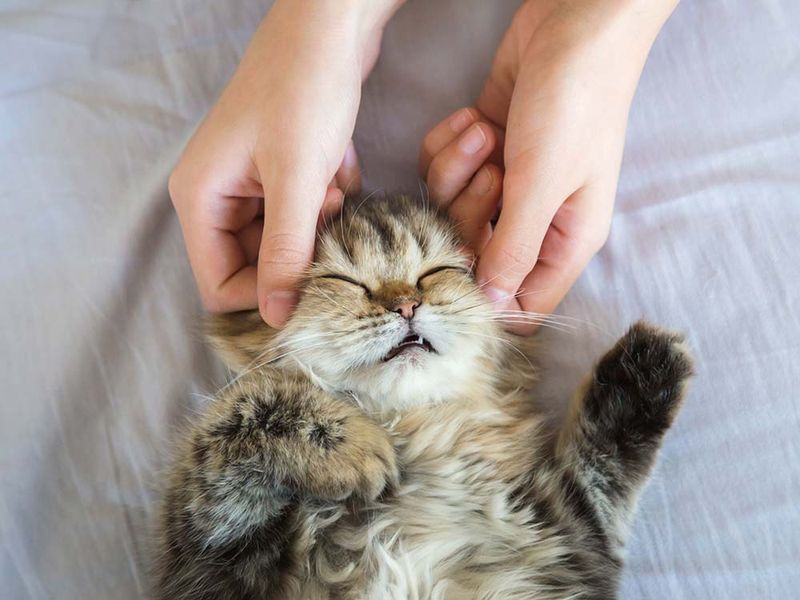
Massaging your cat can be a soothing way to ease their tension. Gentle strokes and light pressure can help calm an anxious cat and strengthen your bond.
Focus on areas like the head, neck, and shoulders, using slow, gentle motions. This physical touch can help release stress and promote relaxation. Always observe your cat’s reactions to ensure they are comfortable and enjoying the experience.
Calming Trick: Catnip
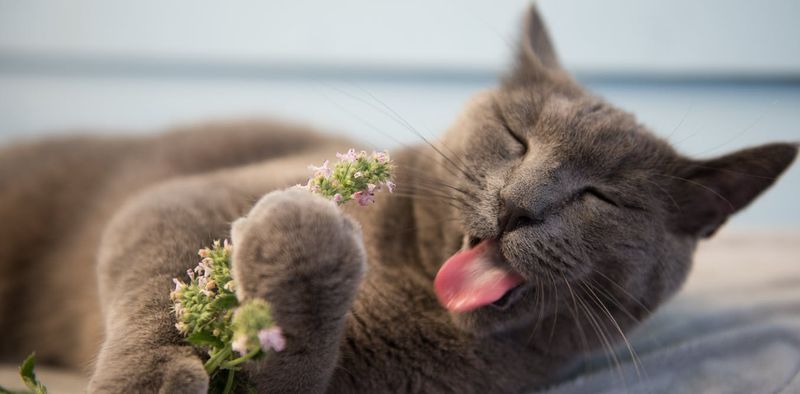
Catnip is known for its euphoric effects on cats and can be a useful tool to calm them. The herb releases feel-good chemicals in your cat’s brain, reducing stress and anxiety.
Offer catnip toys or sprinkle fresh catnip on their favorite play area. Observe your cat’s reaction, as not all cats respond to catnip. When effective, it provides a lighthearted way to distract them from their fears and encourage playful behavior.
Calming Trick: Hide and Seek Games
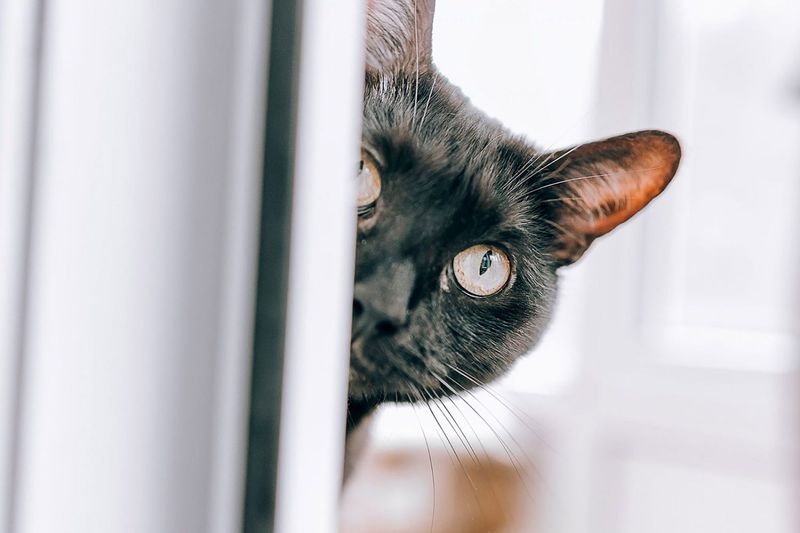
Playing hide and seek can be a fun and engaging way to help your cat overcome anxiety. The game stimulates their curiosity and provides a healthy distraction from stressors.
Encourage your cat to find you or a favorite toy by hiding in different spots. Reward them with treats or affection when they succeed. This playful interaction strengthens your relationship and helps build your cat’s confidence.
Calming Trick: Warm Blankets
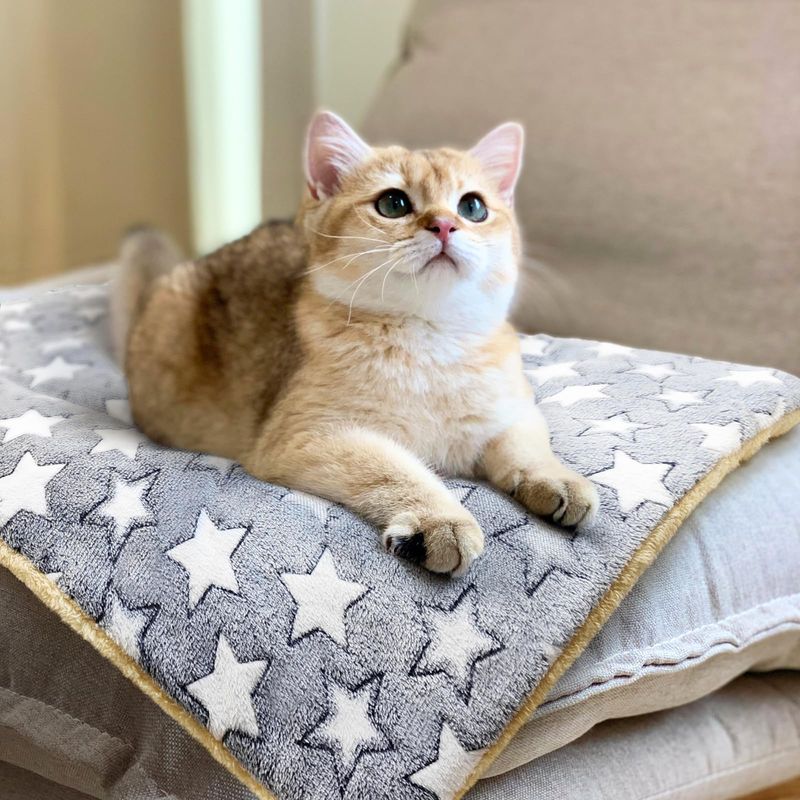
Wrapping your cat in a warm blanket can provide comfort and security, much like a gentle hug. This technique is particularly helpful during stressful events like thunderstorms or visits from strangers.
Choose a soft, familiar blanket that carries your scent, as it can be reassuring. Allow your cat to snuggle in the blanket whenever they feel anxious, creating a soothing ritual that offers them a sense of peace.
Calming Trick: Positive Reinforcement
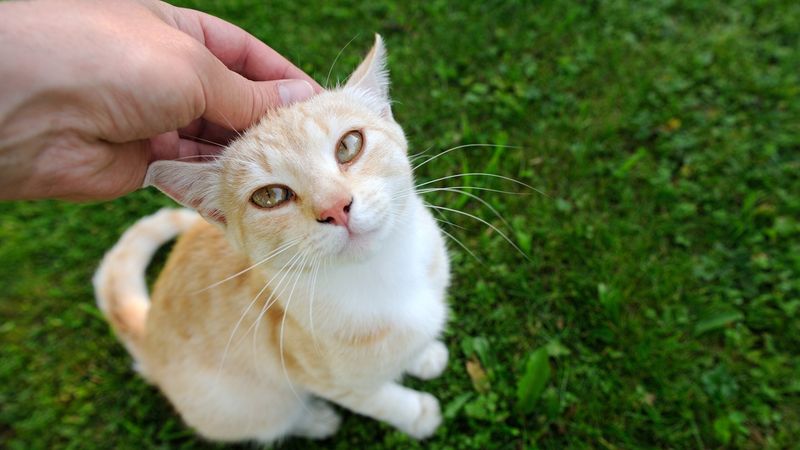
Positive reinforcement helps reinforce calm and desired behaviors in cats. Using treats and praises encourages them to associate new or stressful experiences with positive outcomes.
Introduce this method by rewarding your cat during calm moments or when they react well to a new situation. Over time, your cat will learn to feel more secure and less fearful, knowing that good behavior leads to enjoyable rewards.

